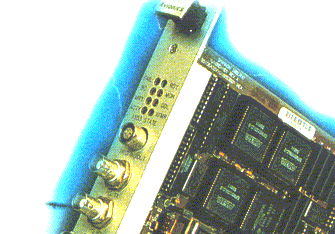
PCB test — fault finding on conformal coated boards
|
||
| Printer Friendly Version | |
 |
Application Note 116 PCB test — fault finding on conformal coated boards |
| Printer Friendly Version | |
| Conformal
coated PCBs require careful cleaning prior to testing or fault
finding. When you are faced with faultfinding a conformally coated PCB it is essential that the coating is carefully cleaned from the PCB prior to attempting to diagnose the fault. You can approach this with commercially available solvents, but this is not an ideal solution except for very localised repairs especially as environmental plus health and safety considerations would suggest you look for a preferable and more environmentally sound alternative. |
|
|
Polar recommends as a
professional alternative to solvent cleaning the use of
wet blast abrasive cleaning systems. The application of
this type of cleaning has the following advantages:
|
Legacy system repair
demands special care; on an old or obsolete PCB which is
no longer available the careful use of wet blast cleaning
process allows you to gently remove the coating and leave
the PCB untouched.
|
 |
| Can
a flying probe test system be used to avoid the need
to clean? No! Flying probe test systems are precision engineered systems and are not designed to pierce through conformal coating. The spring pressure of the test needles on automatic probe test systems is carefully controlled and you should not attempt to use flux busting pins on this type of system. Are special test clips available for coated boards? Some very sharp test clips are available from AP; they will certainly make good contact on oxidised boards and through flux, but most coatings are designed to seal the components onto the board, using this type of clip is no substitute for pre cleaning the board. Polar's T132 is also available as a T132/N option with high force needle probes however the design of these is also primarily intended for work on oxidised or flux coated boards. Where can I find out more about Wet blast cleaning? Polar recommends Vapormatt Vapormate™ wet blast cleaners; as world leaders in surface finishing equipment Vapormatt can advise you on the correct type of cleaner and abrasive system for your boards, you can find out more about wet blast cleaning at www.vapormatt.com Is it possible to remove all types of coating? Not all coatings are suitable for abrasive removal, just as some coatings cannot be solvent removed. In these cases you have only one option which is to scrap the board. Vapormatt can advise you in more detail as to which coatings are suitable for abrasive removal Summary You can successfully use wet blast cleaning to remove most types of PCB conformal coating prior to fault finding:
For Vapormatt contact details see www.vapormatt.com |
|
Polar Instruments Ltd polarinstruments.com Tel: +44 1481 253081 Fax: +44 1481 252476 © Polar Instruments 2002 |
 |
| © Polar Instruments 2002. Polar Instruments pursues a policy of continuous improvement. The specifications in this document may therefore be changed without notice. All trademarks recognised. | |